5- 1 1957 BUICK DYNAFLOW TRANSMISSION MAINTENANCE
The 1957 Twin Turbine Dynaflow transmission will be available as optional equipment for the Series 40 only. The following changes have been made in this transmission.
Due to the lowering of the over-all car height, the transmission oil pan is shallower to provide greater road clearance. It has been possible to eliminate the oil pan drain plug by redesigning the filler pipe. The filler pipe is now of one piece construction and is coupled to the pan. The oil is drained by disconnecting the filler pipe from the pan. See Figure 5-1.
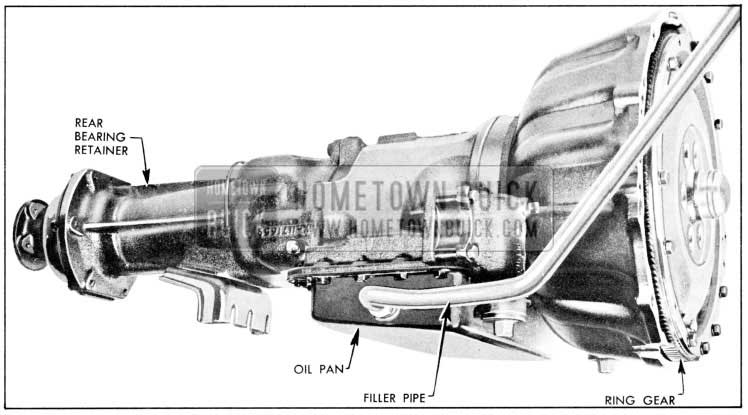
1957 Buick Twin Turbine Dynaflow
The valve and servo borlies have been re designed in line with the shallower oil pan. In decreasing the height of the valve and servo bodies, the low servo piston and spring are shorter, and the pressure regulator valve is smaller in diameter. See Figure 5-2.
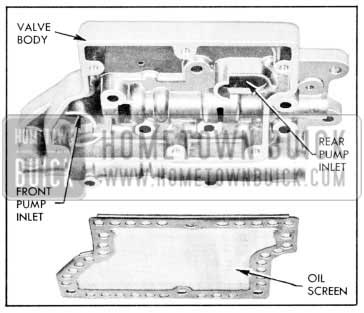
1957 Buick Valve Body and Oil Screen
The starter ring gear is decreased in diameter and is located to the rear of the converter pump housing flange. The converter pump housing is fabricated steel to maintain maximum strength and to improve balance. See Figure 5-3.
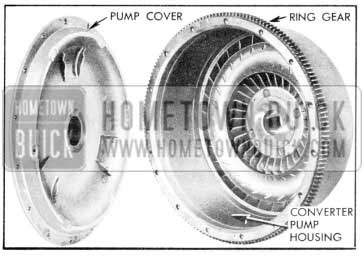
1957 Buick Starter Ring Gear
The input shaft has been modified by omit ting the oil lubrication hole to the rear planetary unit. The planetary gear set is lubricated by oil flow from the rear bearing retainer and oil splash from the pan.
The rear bearing retainer and output shaft have been increased in length.
To accommodate the increase in engine power, another set of clutch plates has been added, making a total of six (6) sets. This extra set of clutch plates has increased the capacity of the high clutch by 20 %.
To guard against excessive high Ioads on bands and planetary gears in low and reverse range at full throttle operation, the stator control valve has been revised so that the high stator blade angle will be obtained in “Drive” range only when the accelerator pedal is de pressed. This is done by actuating the stator feed valve in the high accumulator with accelerator linkage and high clutch pressure. The reaction flange has been modified to accommodate this change in the high accumulator. See Figure 5-4.
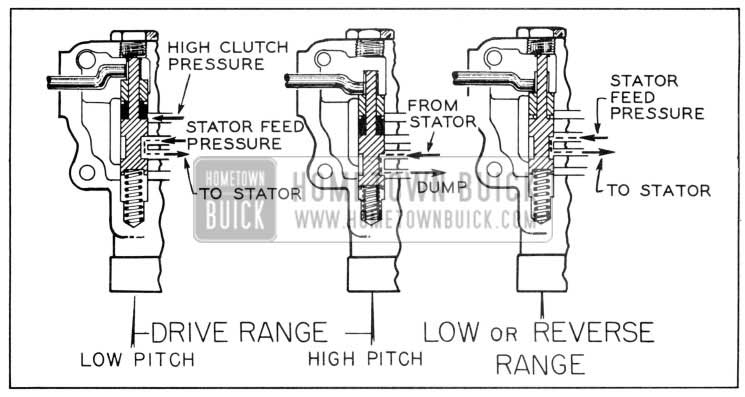
1957 Buick Stator Feed Valve Operation
5-2 DYNAFLOW SHIFT CONTROL LINKACE ADJUSTMENT
If a Dynaflow transmission does not shift properly, the shift control linkage adjustment may easily be checked as follows:
- Move manual control Iever carefully until transmission is shifted into its Drive detent position (manual lever will seem to seat).
- Move manual control Iever toward Neutral (without Iifting toward steering wheel) and note how far it moves before contacting stop.
- Move manual control Iever until transmission is in Low detent position.
- Move manual control lever toward Reverse and note how far it moves before it contacts stop.
- If movement from Drive detent to stop is the same as movement from Low detent to stop, shift control linkage is correctly adjusted.
- If above check shows linkage to be incorrectly adjusted, adjust linkage as follows:
- With manual control Iever in Drive, raise car to gain access to linkage adjusting clevis on lower shift rod.
- Loosen clevis lock nut. Remove cotter pin, clevis pin and spring washer.
- Make sure transmission shift Iever is in Drive detent (center position of 5 possible detents).
- Move idler lever so that upper shift rod is forced upward as far as possible, then turn clevis until clevis pin will just slip in place without moving transmission shift lever. See Figure 5-5.
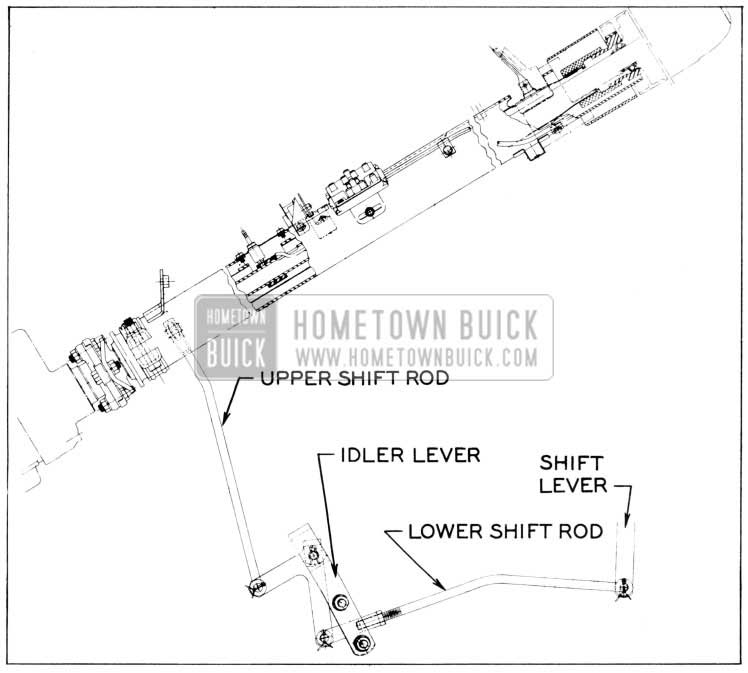
1957 Buick Shift Control Linkage

Leave A Comment
You must be logged in to post a comment.